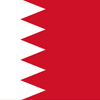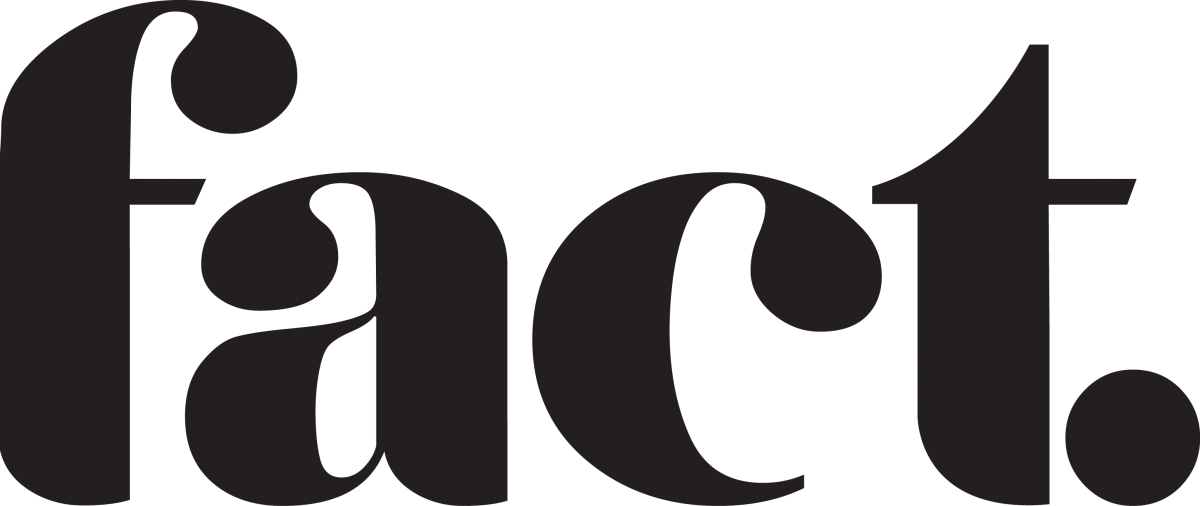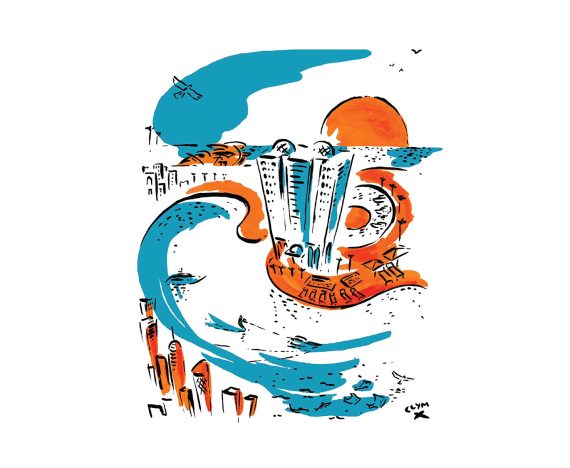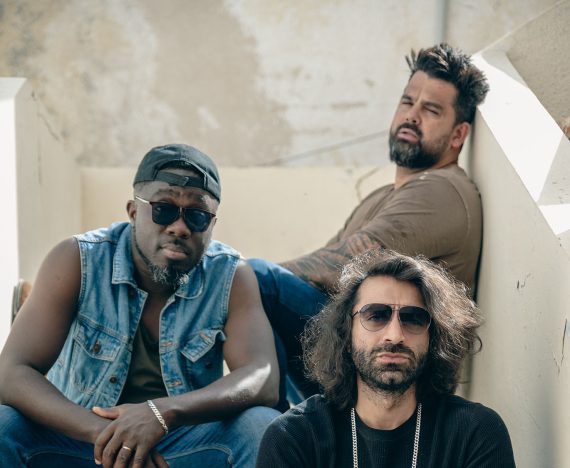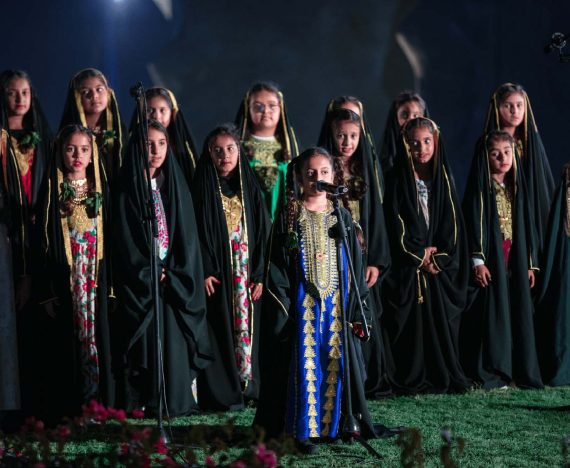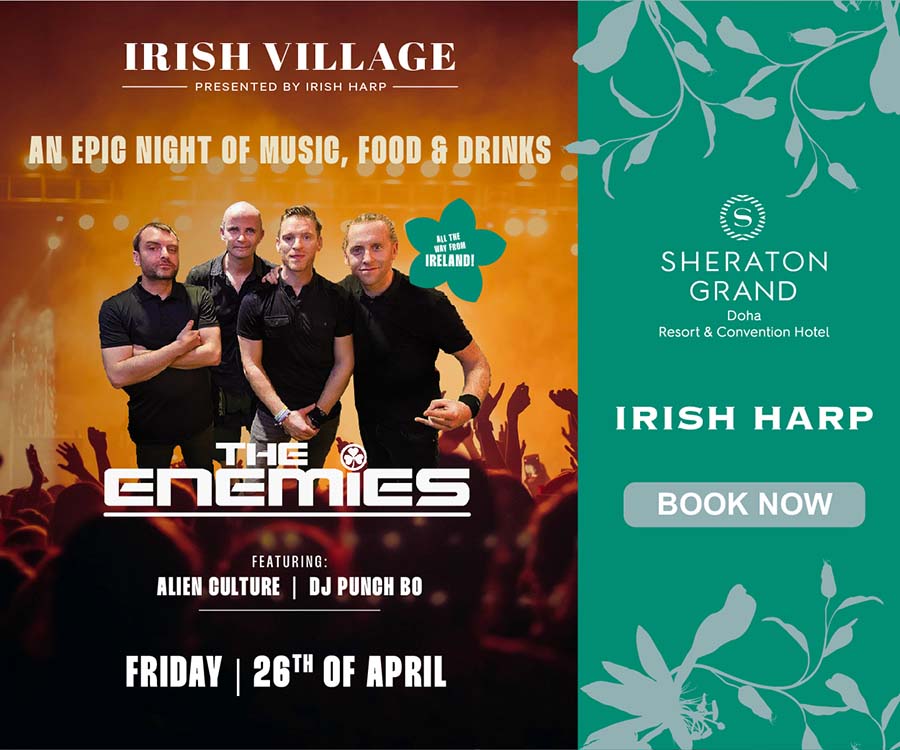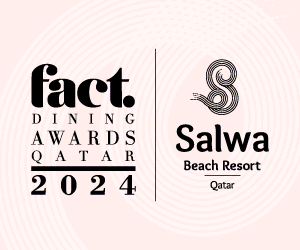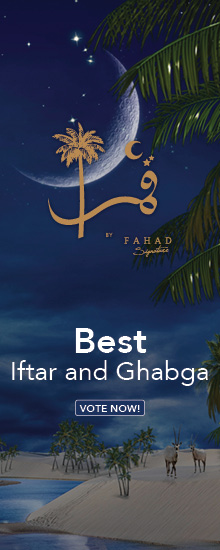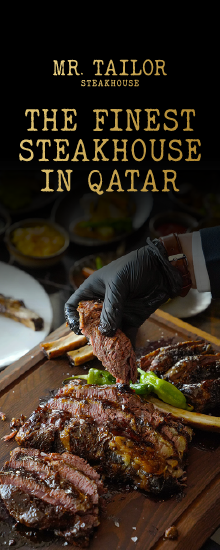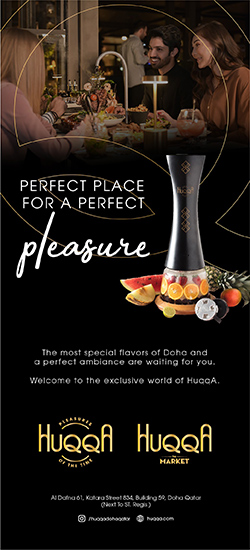THE CULTURAL MAP

Qatar has a lot to offer to its tourists and residents in terms of rich cultural heritage. From a Unesco World Heritage Site to contemporary museums, arts and film exhibitions — Qatar understands the value of artistic heritage as it places itself on the cultural map of the world.
With everything opening up and 80% of the population of Qatar being vaccinated, there are festivals galore over the next few months. We take a look at some muchloved gems and put a spotlight on a few you may not be aware of.
Whether you’re an aspiring designer, an entrepreneur or an artist — Qatar is the place to be, offering you a chance to showcase your talent and be a part of the creative industry and community. Write these down, pin them or keep them stored in your phone for when you need to revisit.
So, which of the festivals, heritage spots or exhibitions are you visiting this season whilst sipping Qatar’s own karak on the go?
THE WONDERS OF ARCHITECTURE
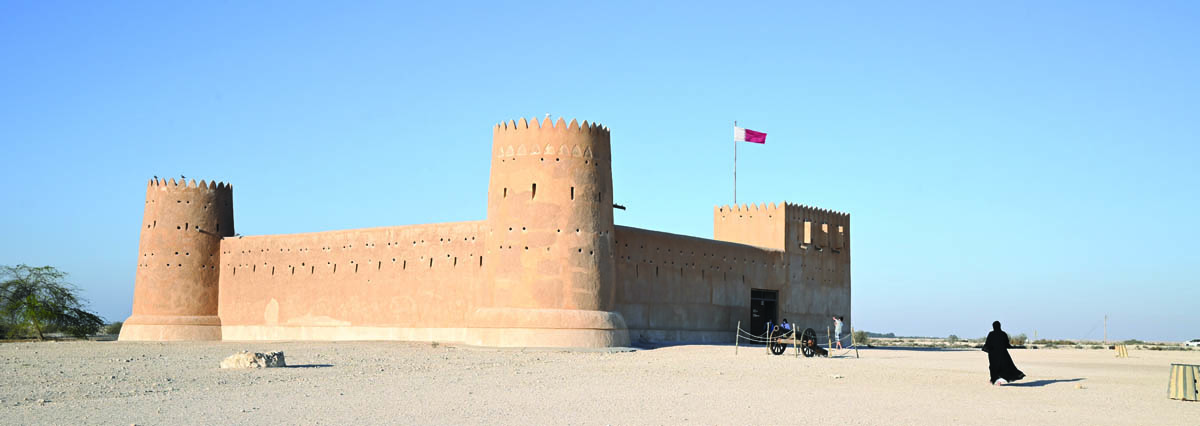
Civilizations leave behind everlasting resonances through their history via the mediums of art, knowledge or architecture. In an effort at immortality, culture allows us to assert our existence to the extent that we are not just ‘now’ but are – in essence – forever. As part of the cultural heritage, works of architecture speak to us, leaving a mark of existence and thought processes for the decades and people to come. It wouldn’t be erroneous to say that heritage is not just a collection of aged buildings encompassing ideas, conditions, customs or values of the society that created it in the past, but also comprehension of the people who use it now and recurrently modify it.
There are several heritage sites in Qatar that offer a window into its past. From the Unesco site of Al Zubarah to the once-thriving dye industry at Jazirat Bin Ghannam Island. There are many interesting options to explore here.
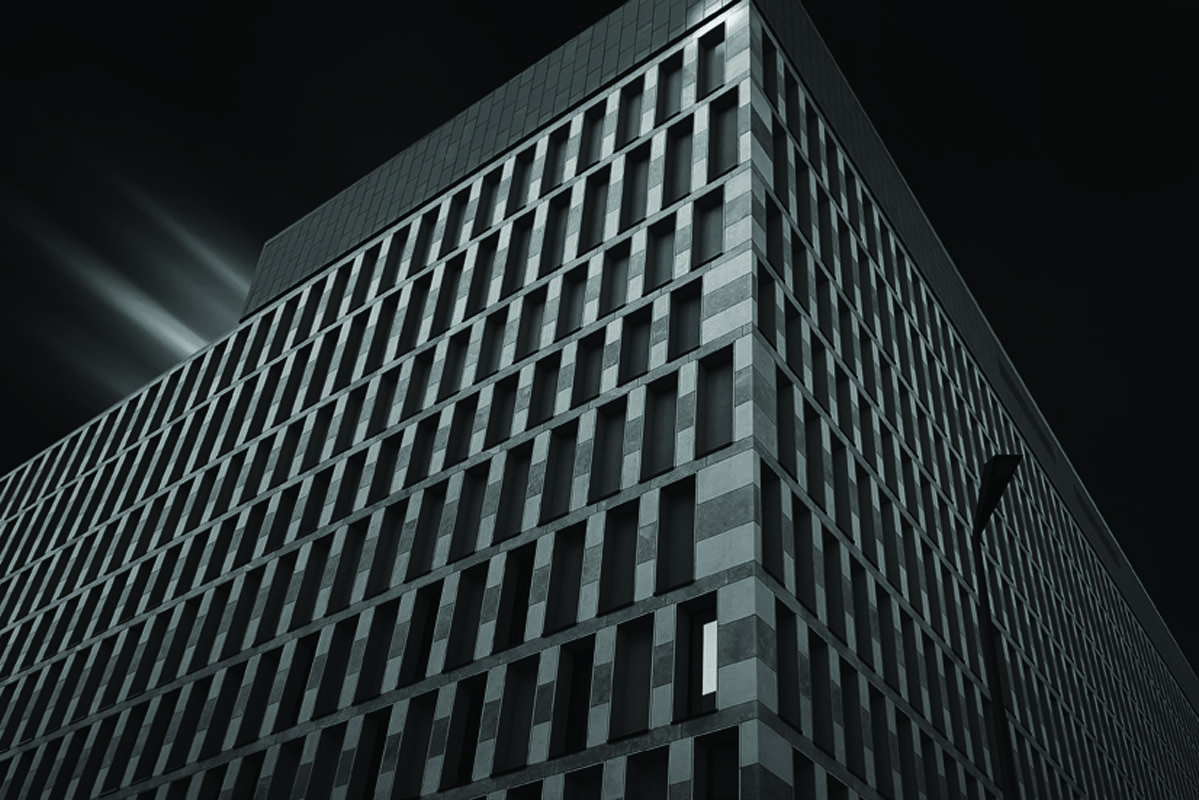
While Al Zubarah Fort, Unesco World Heritage Site, is a typical Arab fort with one-metre-thick walls housing residential palaces, mosques, courtyard houses, fishermen’s huts, streets, double defensive walls, a harbour, a canal, and cemeteries, Al Jassasiya, located in the north-east, is a rock carving site comprising a total of 874 carvings, known as ‘petroglyphs’, the earliest thought to date from Neolithic times.
Jazirat Bin Ghannam is located inside Khor Al Shaqiq Bay and it’s believed that it was used as a production site for red-purple dye from shellfish during the Kassite Period.
Another heritage site, so well preserved, and right in the heart of the city near Souq Waqif, is Al Koot Fort — an imposing, white-stone square fort that was originally built in 1880 and then rebuilt in 1927 by Sheikh Abdulla bin Qassim al-Thani after the original fort was abandoned by the Ottomans. The fort features artefacts and artworks and houses authentic Qatari handicrafts, ornaments, original fishing equipment and boats, historic photos, and oil paintings.
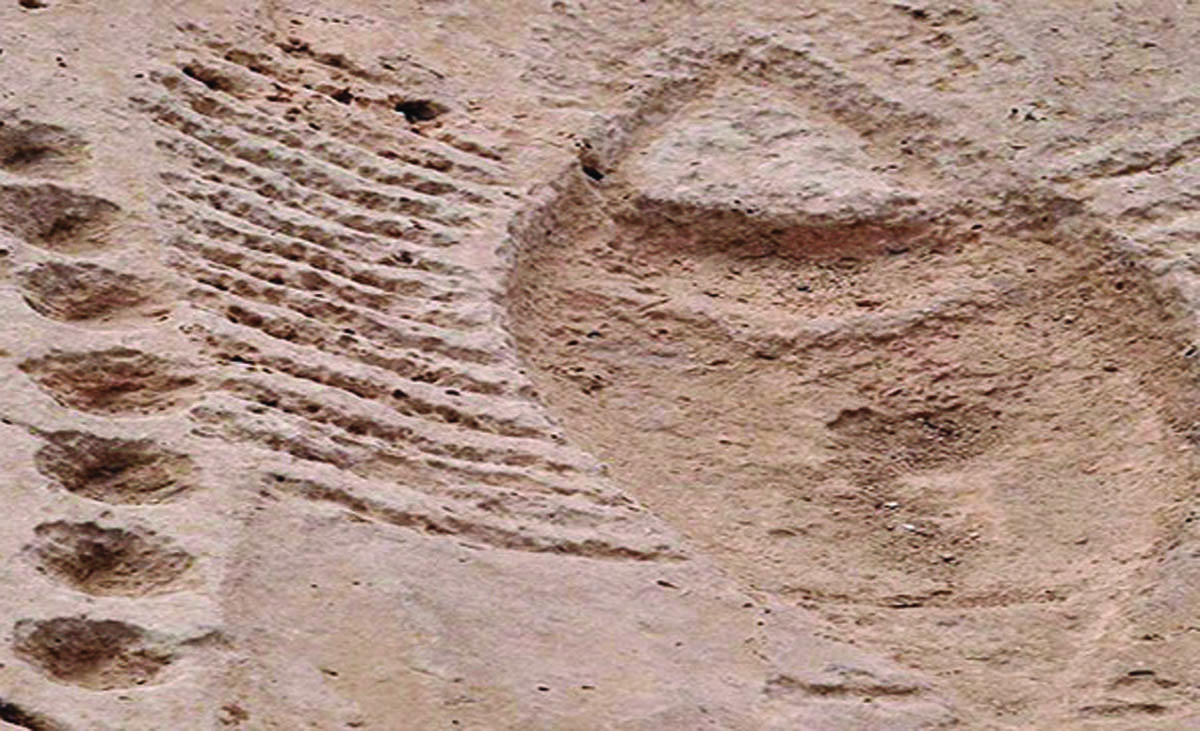
Apart from the heritage archeological sites, other architectural marvels worth visiting in Qatar include, Radwani House, Film City, the Museum of Islamic Art, Doha Fire Station, Katara Cultural Village, Souq Al Wakra, Qatar National Convention Centre, the National Museum of Qatar, Msheireb Museums and Mathaf Arab Museum of Modern Art. These places not only mesh contemporary and cultural heritage but also give a perspective to where culture is heading to.
VISUAL ARTS
Today, more than ever, arts, painting and colours cannot be considered as a short-lived aesthetic expression. With the rise of social media, they have been transformed into some of the most dominant visual languages of our times. However, Qatar has long been the guardian of historical, artistic, archaeological and landscaping heritage, which is quite unique in the world and attracts more than two million tourists every year (pre-pandemic). There exist territories, knowledge, cultural attractions and creativity that make Qatar an extraordinarily extended circuit of beauty.
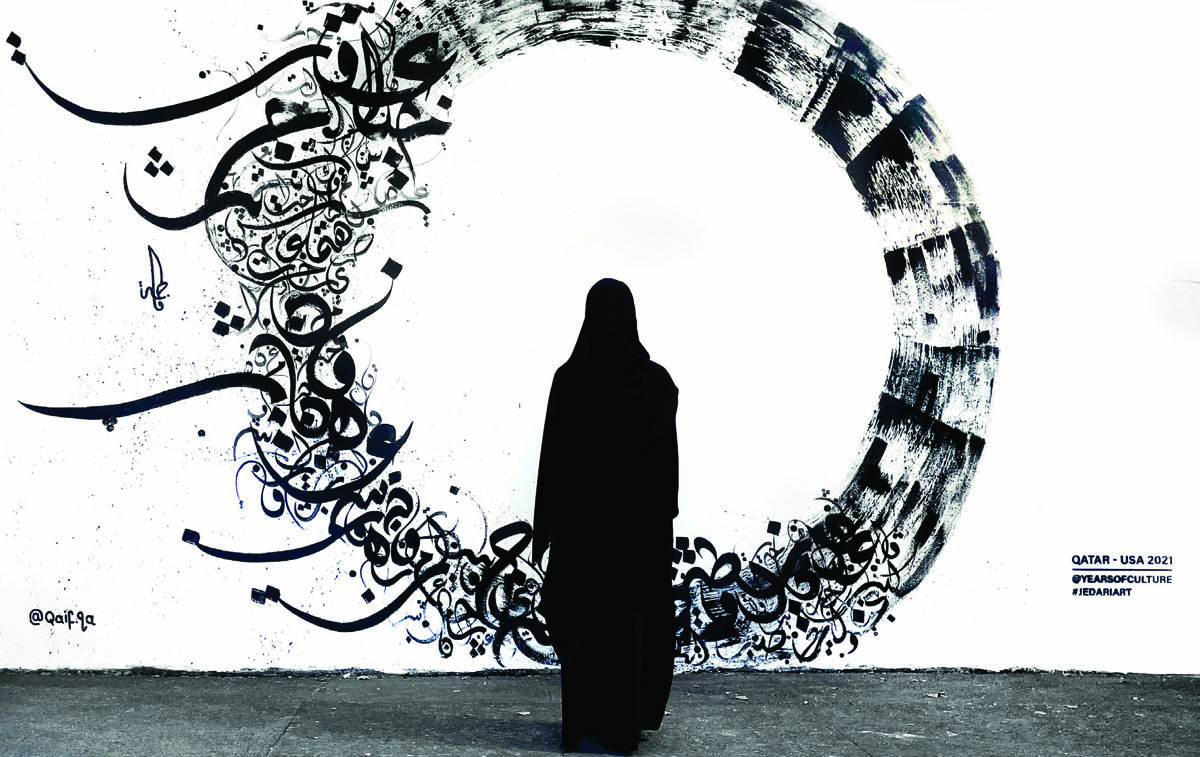
In Qatar, it’s not just about classical painting, although the annual Qatar International Art Festival, now in its third year, attracts the interest of artists from across the world and featured 200 artists from 60 countries in its second edition; and Katara – The Cultural Village is one of the places to look out for when it comes to exhibitions and art space. But no, there is certainly more to the art scene here.
Galleries abound, probably the most well-known is Art 29, located at W Doha Hotel and Residences, which usually hosts huge names. The exclusive testimonial videos of celebrities who attended Fashion Trust Arabia 2019 were also shot here. At the other end of the scale are an emerging band of thriving creatives who have set up their work in various studios across Doha and showcase their pieces in group exhibitions. Not least among these are the likes of Lina al-Ali, who decided to venture full time into showcasing her own work after teaching art for nearly two decades.
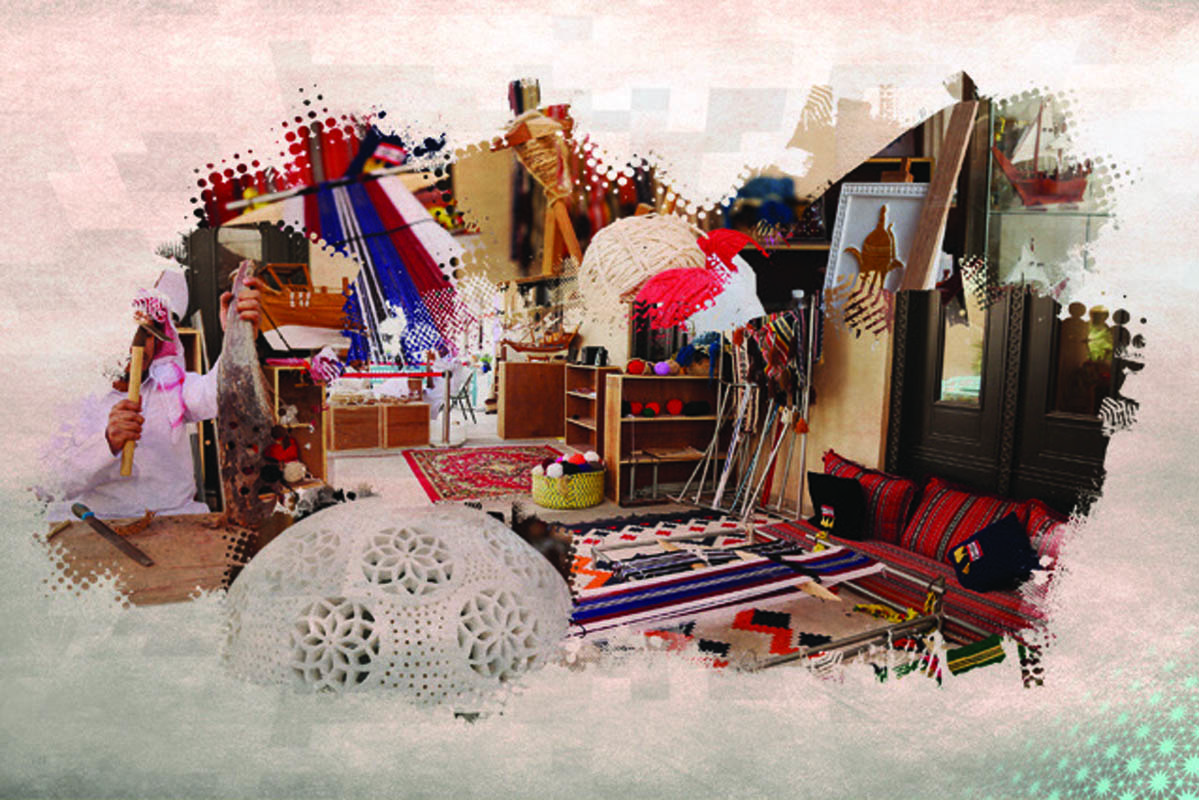
There is also a wealth of new-breed artists coming out and exploring different mediums thanks to the Doha Fire Station, which offers an Artist in Residence programme (which runs from September to June every year) and a chance to be seen and interact with visiting creatives whilst attending different workshops.
The residency applications for this year closed long ago, but, for the next season, they’ll be open by December most likely and will close by mid next year. Many restaurants and cafes in Qatar are also shifting their focus towards art and now provide spaces for collaboration and exhibitions alike. Even Doha Festival City recently hosted an interactive exhibition where artists were selected and called to paint live on the first floor West South hallway before the final finished pieces were exhibited across the mall. And, let’s not forget the installations of public art by Qatar Museums across town.
The works often attract international recognition, projecting a message about the diversity and spirit of our emerging cultural landscape. They help art lovers form connections across continents. The pieces include The Miraculous Journey by Damien Hirst, Smoke by Tony Smith, Perceval by Sarah Lucas, 7 by Richard Serra, Calligraffiti by El Seed, and Lusail Handball Installation amongst others.
KARAK
Cuisine, a symbol of ethnicity, is a very important part of culture and is usually passed down from one generation to the next. It is also an expression of cultural identity. In a country like Qatar where many expatriates come together, they bring the food of their countries with them. Karak is one such beverage that has now been adopted into the roots of Qatari culture becoming a part of who we are. It has taken on iconic prestige as one of the Middle East’s most preferred beverages.
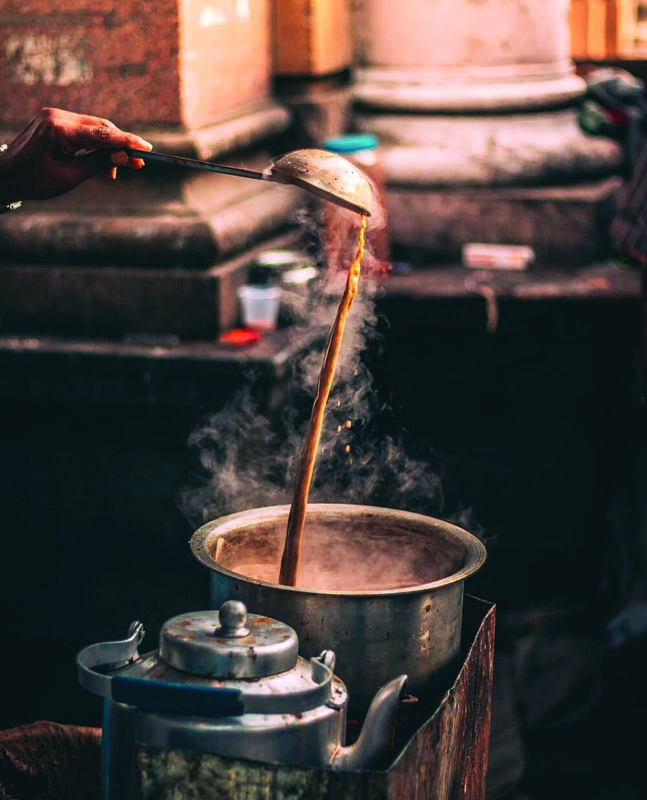
But, as you sip your hot cup of tea, have you ever thought about how karak came to Qatar and the GCC? Masala chai or karak (for those who don’t know karak means hard or strong in Urdu and Hindi) is a South Asian speciality made from a mixture of dark tea, milk, sugar and cardamom — boiled together on a low flame. It is believed that karak came to Qatar with the Indian and South Asian diaspora who travelled to help build the infrastructure for the rapidly developing country in the 1950s, ‘60s and ‘70s, following the discovery of oil.
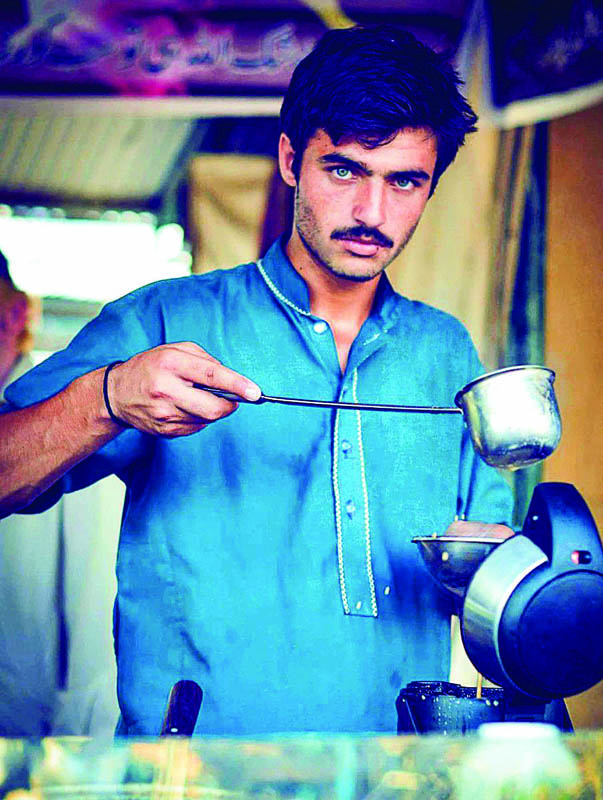
They brought with them the recipe for the sweet, rich tea which provided a simple and familiar taste of home. After locals in Qatar got a taste of it, small changes were made and a new version was adopted across Qatari society. The regionally popular tea advanced into a drink that reflected local tastes by combining a spice common to both cultures, cardamom, and a mutual love for solid black tea.
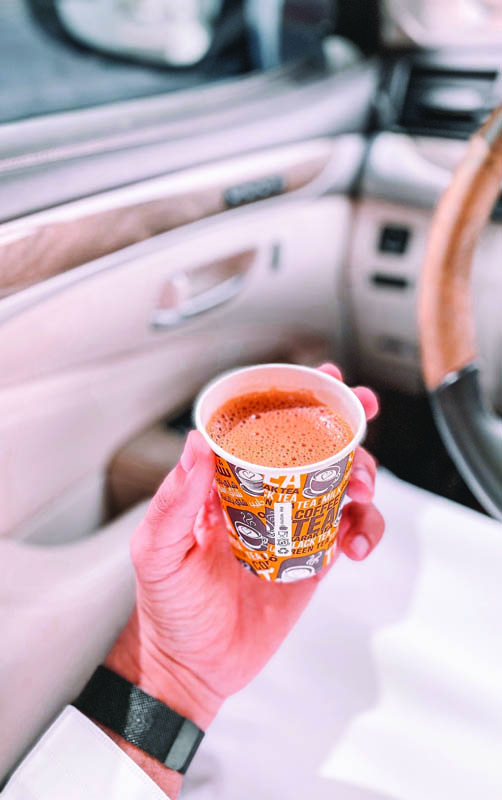
Today, a cup of karak tea in Qatar is available at the beep of a car horn. Karak is found at every café and restaurant, but for your perfect takeaway you should head to Chapati and Karak, Tea Time, Al Naimi Cafeteria, Karak Mudeer, Poori & Karak and Karak Maqnes.
FESTIVALS
Over the past few years, Qatar has focussed on organising cultural events and festivals that attract tourists and people from different countries. Qatar National Convention Centre, Doha Exhibition & Convention Center along with Katara – the Cultural Village serve the purpose of hosting various events — from art exhibitions to musical concerts, fashion weeks and theatrical plays.
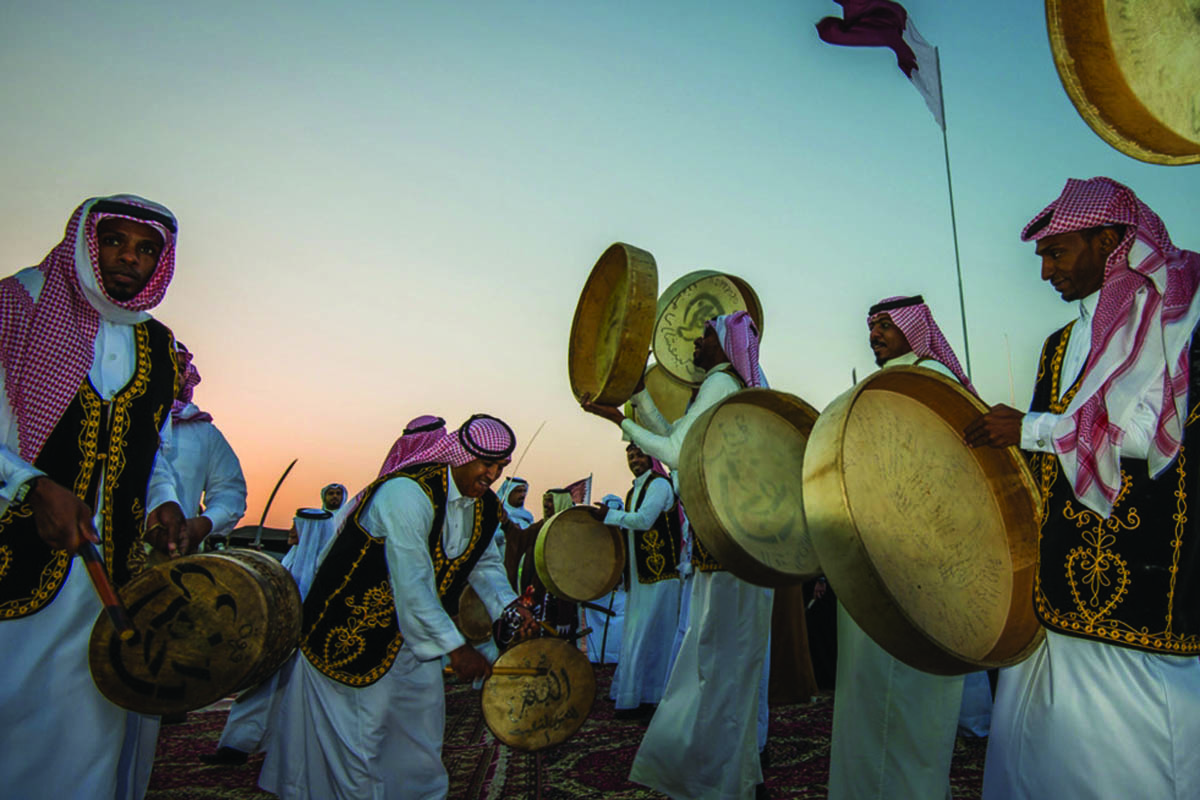
Later this month Qatar National Tourism Council is set to organise Heya Fashion Week, with Shop Qatar concluding on October 10. The Ministry of Culture and Sports is bringing Qatari Songs Night Festival 2021 from October 10 to 11. Featuring Qatari musicians and songs, the festival aims to embody the artists’ connection with the national identity and culture.
So, one can expect lots of oud, nay and qanun during the two-day event. Apart from that, next month we’ll also see the Ajyal Film Festival, Doha Art 2021 and the 11th edition of Qatar International Food Festival (QIFF) taking place. Last year, because of Covid, QIFF was held online with restaurants and hotels taking part in the festival via delivery app Talabat.

This time, the festival will return to its physical format. The details will soon be unveiled and as soon as they are, we’ll be bringing you the news. But, as usual, the festival will include planned activities like workshops and musical performances, as well as open forums to encourage public discussions. Qatar International Art Festival is also round the corner at the end of this month from October 24 to 28. If you’re a sports enthusiast, which almost everyone in Qatar is, the Men’s ITF World Tennis is scheduled to take place from October 4 to 24 at the Khalifa Tennis and Squash Complex.
FASHION & DESIGN
Nothing quite puts a spotlight on culture and heritage more than fashion itself. According to Gossip Girl’s Blair Waldorf, it shows the world who we are and who we’d like to be. It is the most powerful art there is. It’s movement; design and architecture all in one. Qatar has long been known as one of the biggest consumers of luxury fashion.
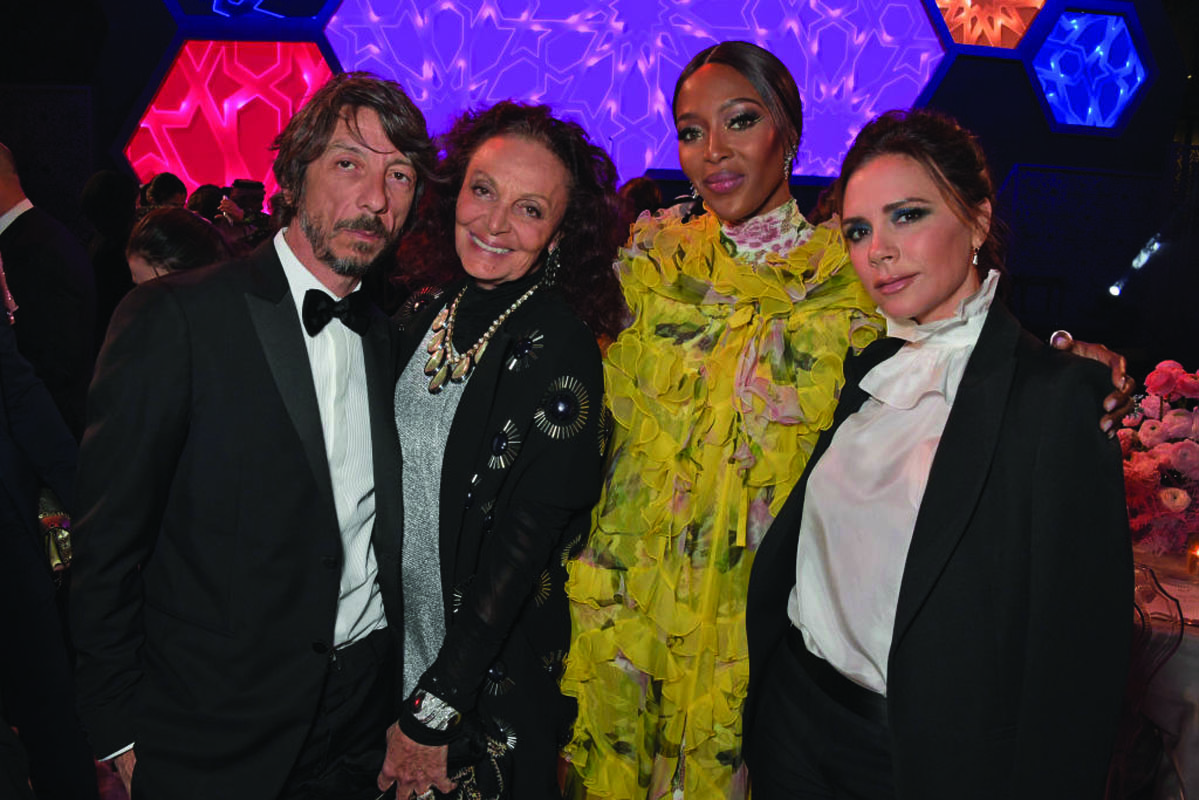
However, now initiatives have been put forward to help its own local fashion industry to thrive. Qatar brought together the best designers of the region with a jury of notable personalities from the creative industry worldwide in 2018 for Fashion Trust Arabia, (FTA) a prize to support-up-andcoming and established designers. Now in its fourth installment, FTA is also offering mentoring sessions with industry leaders.
The finalists in 2018 found themselves presenting to a panel of judges, including Diane von Furstenberg, Victoria Beckham, Alexander Wang, Haider Ackermann and others. Apart from FTA, Qatar also has M7, a new incubation hub for start-ups in Qatar’s growing fashion and design industry located in Msheireb Downtown.
The place encompasses a public showplace for entrepreneurship and innovation. Spread over an impressive five-story building, M7 envisions a space for everyone who is interested in the creative industry, be it as a hobbyist or well-established business. With the Covid-19 pandemic, M7 was also offering online entrepreneurship workshops and webinars for aspiring creatives. Industry leaders and experienced designers were given an opportunity to speak to the young aspiring designers, sharing their journeys and helping devise a roadmap for successful launches and sustainability.
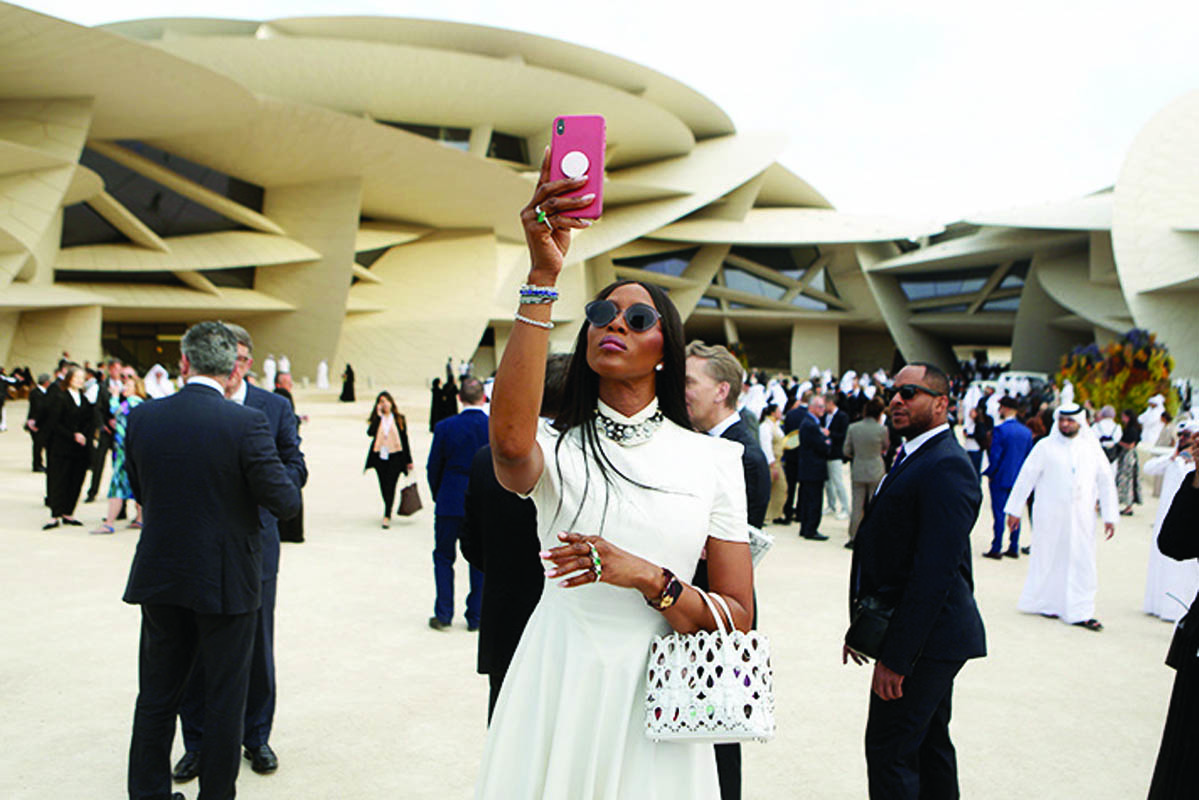
Under the direction of chairperson, HE Sheikha Al Mayassa bint Hamad bin Khalifa al-Thani, M7 also promotes sustainable fashion, and showcases exhibitions every now and then focussed on pollution and how it can be reduced with the fashion industry. Apart from M7, and FTA, Shop Qatar and Heya Fashion Week are also platforms that bring local artisans and designers into the spotlight by providing them a space and platform to reach out to a greater audience and more buyers. The young designers are looking out for communities, sustainability, supporting artisans and sending out a strong message as part of their showcase. If you’re a design enthusiast or aspiring to be one, these are the places to look out for and take the best from. ✤

